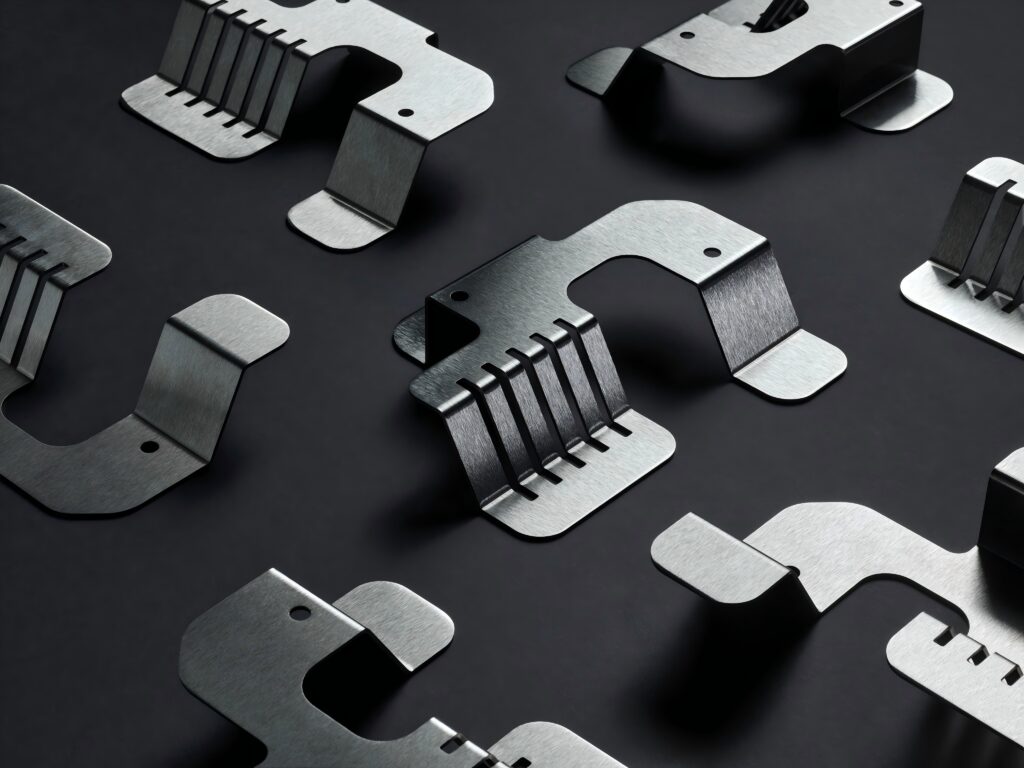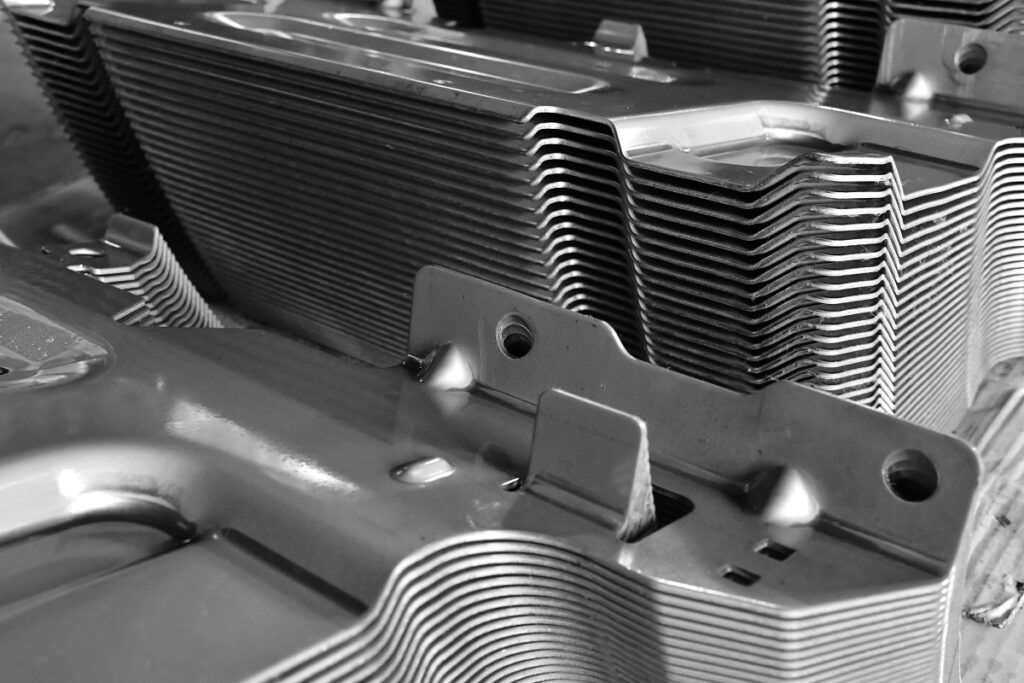Table of Contents
ToggleIn today’s fast-paced product development landscape, bringing a new design to market quickly and efficiently is critical. Whether it’s for automotive components, consumer electronics, or industrial equipment, sheet metal prototyping plays a vital role in validating designs, testing functionality, and refining manufacturability—long before mass production begins.
This article explores the key aspects of sheet metal prototyping, including its processes, materials, benefits, and applications. We’ll also introduce how RAPIDMFG, a trusted custom manufacturing partner based in China, supports global clients in realizing their sheet metal prototypes with speed, precision, and flexibility.

What is Sheet Metal Prototyping?
Sheet metal prototyping refers to the fabrication of metal parts and components from thin sheets of metal, typically ranging from 0.2 mm to 6 mm in thickness. These prototypes are used for evaluating fit, form, and function in real-world applications, enabling engineers and designers to iterate quickly and optimize their designs before investing in costly tooling for mass production.
Unlike traditional production which may rely on progressive stamping or deep drawing dies, sheet metal prototyping focuses on rapid, low-volume, and cost-effective methods, making it ideal for startups, R&D teams, and product developers.
Common Sheet Metal Prototyping Processes
At RAPIDMFG, we employ a combination of digital and traditional fabrication methods to produce accurate sheet metal prototypes. The main processes include:
1. Laser Cutting
Laser cutting uses high-powered lasers to slice through metal sheets with exceptional precision and minimal thermal distortion. It’s perfect for cutting complex shapes, holes, and contours in aluminum, stainless steel, carbon steel, and other metals.
2. CNC Punching
CNC punching involves using computer-controlled machines to stamp or punch holes and shapes into the sheet metal. It’s faster than laser cutting for simple geometries and is often used for enclosures, brackets, and panels.
3. Bending and Forming
Using press brakes and other tools, sheet metal parts are bent into their final shapes. This process requires careful design to account for bend radii, material springback, and structural strength.
4. Welding and Fastening
For assemblies or more complex parts, welding (TIG, MIG, spot welding) and mechanical fastening methods such as riveting or bolting are used to join components together securely.
5. Finishing
Finishing processes like powder coating, anodizing, brushing, sandblasting, or electroplating can be applied to improve aesthetics, corrosion resistance, and durability.
Common Materials for Sheet Metal Prototyping
Material choice is critical in prototyping, as it impacts strength, weight, and cost. Some commonly used metals include:
- Aluminum (5052, 6061) – Lightweight, corrosion-resistant, and easy to bend.
- Stainless Steel (304, 316) – Strong, heat-resistant, and highly durable.
- Cold Rolled Steel (CRS) – Economical and suitable for powder coating or painting.
- Copper and Brass – Excellent conductivity, often used in electronics.
At RAPIDMFG, we help clients select the right material for their application based on the part’s requirements and end-use conditions.

Why Choose Sheet Metal Prototyping?
There are several key advantages to using sheet metal prototyping during product development:
1. Rapid Iteration
With no need for complex tooling, designs can be modified and re-fabricated quickly, allowing for fast feedback and improvements.
2. Functional Testing
Sheet metal prototypes are made from real production-grade materials, enabling realistic testing under real-world conditions.
3. Design Validation
Visualizing and handling a physical prototype allows designers to evaluate ergonomics, dimensions, and performance before full-scale production.
4. Cost Efficiency
Compared to injection molding or die casting, sheet metal prototyping requires lower upfront investment, especially for small quantities.
5. Manufacturing Insight
Prototyping helps uncover manufacturability issues early, saving time and cost during later production stages.
Applications of Sheet Metal Prototypes
Sheet metal prototyping is widely used across industries such as:
- Consumer Electronics: Laptop housings, audio equipment, and battery enclosures.
- Automotive:Dashboards, brackets, HVAC parts, and transmission components.
- Industrial Equipment: Machine covers, electrical panels, control boxes.
- Medical Devices: Enclosures, trays, instrument covers.
- Telecommunications: Server racks, antenna mounts, cabinet doors.
No matter the industry, sheet metal prototypes enable faster product development cycles and reduce risks associated with design flaws.
Design Tips for Sheet Metal Prototypes
Designing for sheet metal requires careful consideration of the material and processes. Here are some best practices:
- Minimize sharp corners to prevent cracking and improve safety.
- Use standard bend radii based on material thickness (typically 1x or 1.5x the thickness).
- Design self-locating tabs or slots for easier assembly and alignment.
- Avoid overly tight tolerances unless necessary; sheet metal processes have practical limits.
- Add relief cuts near bends to prevent tearing or distortion.
If you’re unsure, RAPIDMFG’s engineering team can review your design files (2D/3D drawings) and provide DFM (Design for Manufacturability) feedback.
Why Choose RAPIDMFG for Sheet Metal Prototyping?
With over 15 years of experience in rapid manufacturing, RAPIDMFG has become a trusted partner for custom sheet metal prototyping and low-volume production. Based in Zhuhai, Guangdong, China, our facility is equipped with advanced laser cutters, CNC punch machines, press brakes, and TIG/MIG welding stations, allowing us to deliver:
- Fast Turnaround Times: Typical lead times range from 3 to 7 working days, depending on complexity.
- One-Stop Service: From material sourcing to surface finishing, we manage the entire process in-house.
- High Quality Assurance: Strict QC processes including CMM inspection, functional tests, and material certification.
- Global Delivery: We ship prototypes and parts worldwide with full export documentation and logistics support.
- Multilingual Support: Our English-speaking team assists you every step of the way—from quote to final delivery.
Whether you need a single functional prototype or a batch of production-ready parts, we can help bring your design to life with accuracy and speed.
Conclusion
Sheet metal prototyping is a powerful tool that bridges the gap between concept and production. It enables companies to innovate faster, reduce risks, and stay ahead of the competition. By partnering with an experienced manufacturer like RAPIDMFG, you gain access to state-of-the-art equipment, expert engineering support, and scalable solutions tailored to your needs.
If you’re ready to prototype your next metal part or want to learn more about our sheet metal fabrication capabilities, contact RAPIDMFG today for a free quote and design review. Let’s bring your ideas to market—faster, smarter, and with precision.
About RAPIDMFG
RAPIDMFG is a professional custom manufacturing company based in Zhuhai, China. We specialize in sheet metal fabrication, CNC machining, plastic injection molding, aluminum die casting, silicone compression molding, extrusion, and rapid prototyping. Our mission is to help global customers accelerate product development and reduce manufacturing lead times—without compromising on quality.
Visit us or email us at rfq@rapidmfgtech. com to learn more.
